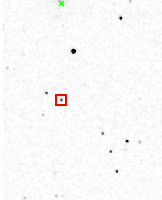2MASS
[2] It was conducted in the short-wavelength infrared at three distinct frequency bands (J, H, and K) near 2 micrometres, from which the photometric survey with its HgCdTe detectors derives its name.
The goals of this survey included: Numerical descriptions of point sources (stars, planets, asteroids) and extended sources (galaxies, nebulae) were cataloged by automated computer programs to an average limiting magnitude of about 14.
The resulting data and images from the survey are currently in the public domain, and may be accessed online for free by anyone.
[7] There is also a list of 2MASS science publications with links to free pre-publication copies of the papers.
[8] 2MASS is sponsored by the University of Massachusetts Amherst, the Infrared Processing and Analysis Center (IPAC, run by Jet Propulsion Laboratory (JPL) and Caltech), NASA, and the National Science Foundation (NSF).
